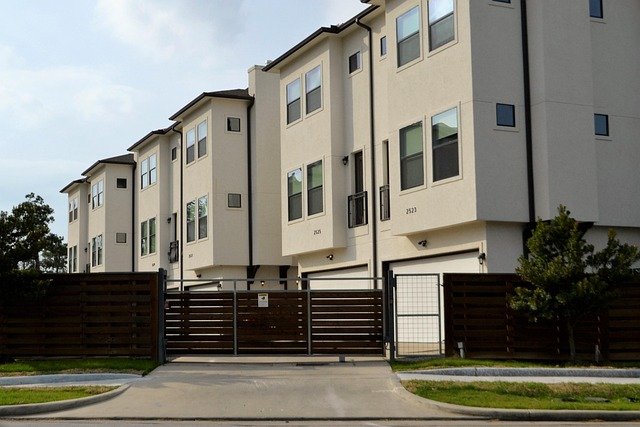Navigating Rent Assistance: A Guide to Affordable Housing Solutions
Finding affordable housing can be a challenging task for many individuals and families. Rent assistance programs offer a lifeline to those struggling with housing costs, providing financial support and access to affordable living options. This comprehensive guide explores various rent assistance programs, government initiatives, and strategies to help you secure affordable housing.

Government agencies, non-profit organizations, and sometimes private entities offer rent assistance programs. The most common type of rent assistance is the Housing Choice Voucher Program (Section 8), administered by the U.S. Department of Housing and Urban Development (HUD). This program allows eligible participants to choose their own housing in the private market, with the government subsidizing a portion of the rent.
Who qualifies for rental assistance programs?
Eligibility for rental assistance programs varies depending on the specific program and location. However, most programs consider the following factors:
-
Income: Typically, households must earn below a certain percentage of the area median income (AMI) to qualify.
-
Family size: The number of people in your household can affect eligibility and benefit amounts.
-
Citizenship or immigration status: Most federal programs require participants to be U.S. citizens or eligible non-citizens.
-
Asset limits: Some programs may have restrictions on the value of assets a household can own.
-
Housing conditions: The rental unit must meet certain quality standards to be eligible for assistance.
It’s important to note that due to high demand and limited funding, many rental assistance programs have long waiting lists. Applicants may need to wait months or even years before receiving assistance.
What types of government programs are available for housing assistance?
Several government programs aim to provide affordable housing options and rent assistance:
-
Housing Choice Voucher Program (Section 8): This federal program provides vouchers to eligible low-income families, the elderly, and disabled individuals to rent housing in the private market.
-
Public Housing: These are government-owned rental units available to low-income families, elderly individuals, and persons with disabilities at reduced rates.
-
Project-Based Section 8: Similar to the Housing Choice Voucher Program, but the subsidy is tied to specific apartment complexes rather than being portable.
-
Low-Income Housing Tax Credit (LIHTC) Program: This program incentivizes private developers to create affordable housing units by offering tax credits.
-
HOME Investment Partnerships Program: This program provides grants to states and localities to fund various housing-related activities, including building, buying, and rehabilitating affordable housing for rent or homeownership.
-
Rural Rental Assistance: Administered by the U.S. Department of Agriculture, this program provides rent subsidies to low-income tenants of USDA-financed Rural Rental Housing or Farm Labor Housing projects.
How can I find affordable apartments in my area?
Finding affordable apartments requires research and persistence. Here are some strategies to help you in your search:
-
Contact your local Public Housing Agency (PHA): They can provide information on available subsidized housing and assistance programs in your area.
-
Use online resources: Websites like HUD.gov, Affordable Housing Online, and GoSection8.com list affordable housing options and subsidized apartments.
-
Check with non-profit organizations: Many local non-profits offer housing assistance or can direct you to available resources.
-
Explore mixed-income developments: These properties often include a percentage of units reserved for low-income residents at reduced rates.
-
Consider shared housing: Renting with roommates can significantly reduce individual housing costs.
-
Look for naturally occurring affordable housing (NOAH): These are older apartment buildings that may offer lower rents due to their age and fewer amenities.
What other options exist for those seeking affordable housing?
In addition to government programs and traditional affordable apartments, consider these alternatives:
-
Cooperative housing: Members jointly own and manage their housing, often resulting in lower costs.
-
Community land trusts: These non-profit organizations acquire and manage land to preserve long-term housing affordability.
-
Tiny homes: These compact living spaces can offer a more affordable housing option in some areas.
-
Accessory dwelling units (ADUs): Also known as granny flats or in-law suites, these smaller, secondary housing units on single-family lots can be more affordable.
-
Rent-to-own programs: Some initiatives allow tenants to build equity while renting, with the option to purchase the home in the future.
What should I consider when applying for rent assistance?
When applying for rent assistance, keep the following in mind:
-
Documentation: Gather all necessary paperwork, including proof of income, assets, and family composition.
-
Waiting lists: Be prepared for potentially long wait times and consider applying to multiple programs.
-
Housing quality standards: Ensure that any potential rental unit meets the program’s requirements.
-
Lease terms: Understand your rights and responsibilities as a tenant in subsidized housing.
-
Reporting changes: Most programs require you to report changes in income or family composition promptly.
-
Recertification: Be prepared for annual reviews to determine continued eligibility.
Navigating the world of rent assistance and affordable housing can be complex, but with persistence and the right resources, it’s possible to find suitable and affordable living arrangements. By exploring various government programs, local initiatives, and alternative housing options, you can increase your chances of securing a home that fits both your needs and budget.





